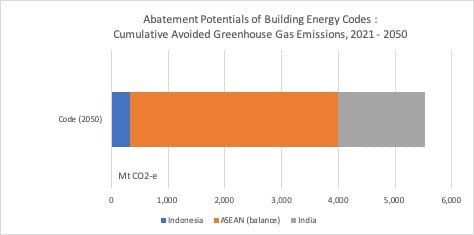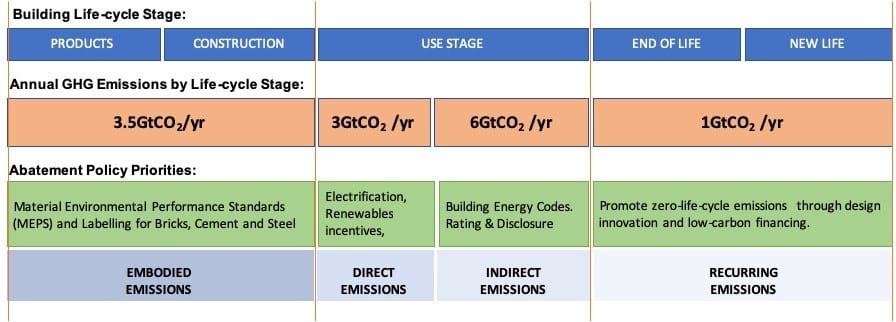Home > Our Impact > Buildings

Buildings
Collectively, India, Indonesia, and Southeast Asian countries are already among the largest sources of GHG emissions in the buildings sector. On the horizon is Africa—where rates of urbanization could overtake Southeast Asia after 2030. GBPN works in these regions to produce the greatest impact. This includes working with governments to change policy at all levels alongside implementation support for innovative policy reform programs to motivate decision-makers about smart and practical ways to deliver best practice in their region. By providing data-driven analysis and fostering partnerships, GBPN ensures that sustainable building practices are adopted and scaled.
Zero-carbon building codes that include energy efficiency, electrification, and renewable energy adoption
Zero-carbon building codes are a set of regulations and standards that can reduce and, ultimately, eliminate carbon emissions from the construction and operation of new buildings. Key components of these codes include resource- and energy-efficiency standards, incentives for on-site renewable energy sources, and requirements to shift the energy sources used in buildings from fossil fuels to electricity for heating, cooking, and other needs. The requirements and enforcement mechanisms of zero-carbon building codes should adapt to local factors such as climatic conditions, population needs, utility structures, and government capacity.
Benchmarking requirements and building performance standards to facilitate improvements in existing buildings
Building performance standards reduce the carbon impact of buildings by requiring that they meet energy and/or GHG emissions-based performance targets in their operation, maintenance, and retrofits. These standards usually tighten over time, driving long-term improvement in the existing building stock. When combined with zero-carbon building codes, building performance standards are a powerful policy tool. Key aspects of building performance standards include metrics that measure energy consumption, benchmarking requirements, inspection and verification, and ratings that identify better-performing buildings for property investors and financiers, thereby supporting market transformation. To use building performance standards, jurisdictions must first adopt enabling policies to measure the energy use in buildings, such as through installation of smart meters.
Embodied carbon standards to lower emissions from building materials like steel and cement
Embodied carbon standards can ensure that buildings are zero emission over their whole life cycle and not just during the operating phase by factoring in the emissions associated with the production, use, and maintenance of construction of materials. These policies include performance certificates and labeling to disclose building life-cycle emissions for all new buildings, as well as road maps and targets for reducing those emissions in line with net-zero goals.
Air pollution policies governing low-carbon appliance use and building construction
Building regulations can ensure minimum performance standards for indoor emissions of pollutants such as methane, nitrogen oxides, sulfur oxides, and volatile organic compounds, as well as natural ventilation, access to daylight, and thermal comfort. Indoor environmental standards can require all new or renovated buildings to be equipped with devices for monitoring and controlling indoor air quality. Additionally, all-electric building codes can eliminate direct emissions from gas combustion and methane leakage indoors. Complementary policies such as subsidies and rebates for heat pumps and induction stoves can lower the up-front cost of switching to zero-emission appliances.
Ensuring equity
Emerging economies such as India and Indonesia are rapidly expanding building electrification, yet the source of most building emissions is embodied emissions from the production of building materials and products, and direct emissions. Direct GHG emissions in the buildings sector are associated with the residential use of fossil fuels and biomass to generate electricity, hot water, and space heating. Eliminating emissions from buildings therefore requires adopting zero-emissions performance requirements, achieved by minimizing energy demand through energy codes and performance ratings, reforming building codes and planning controls to phase out fossil-fuel use, and requiring connection to a renewable electricity supply.




